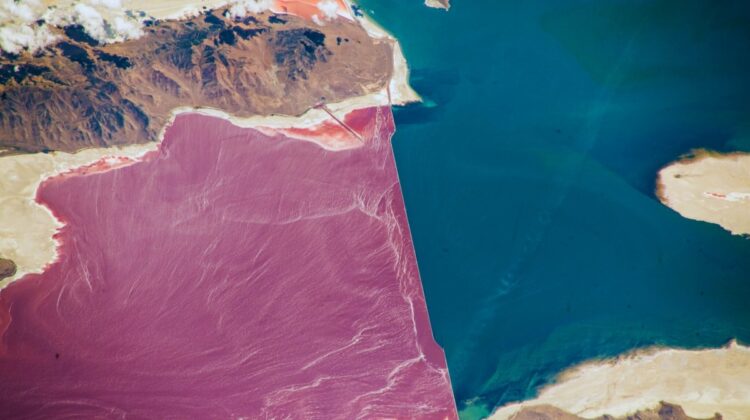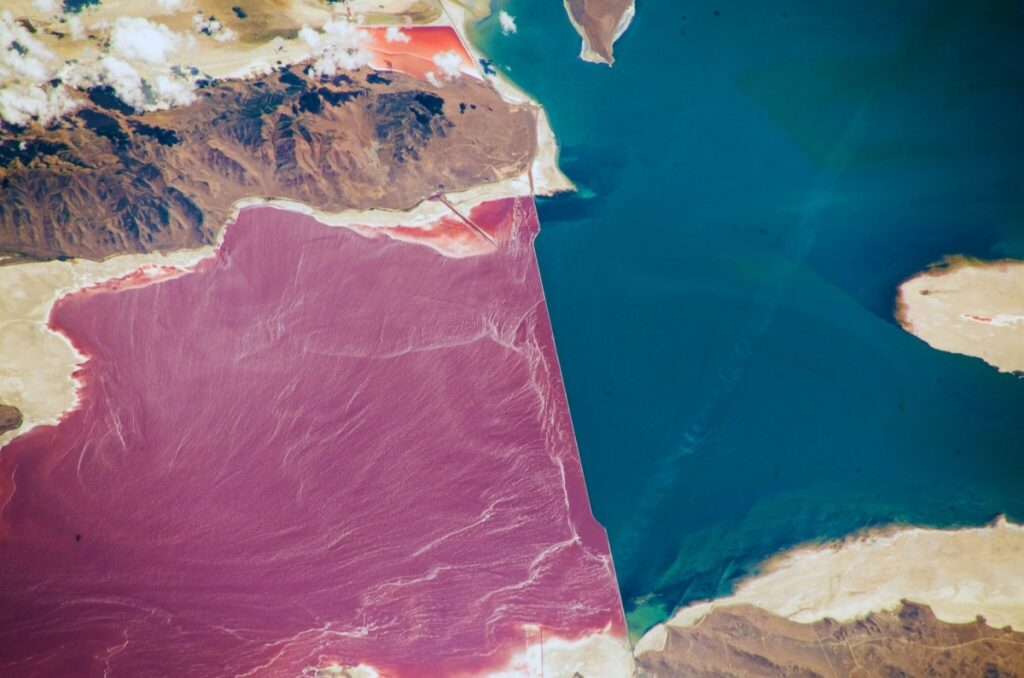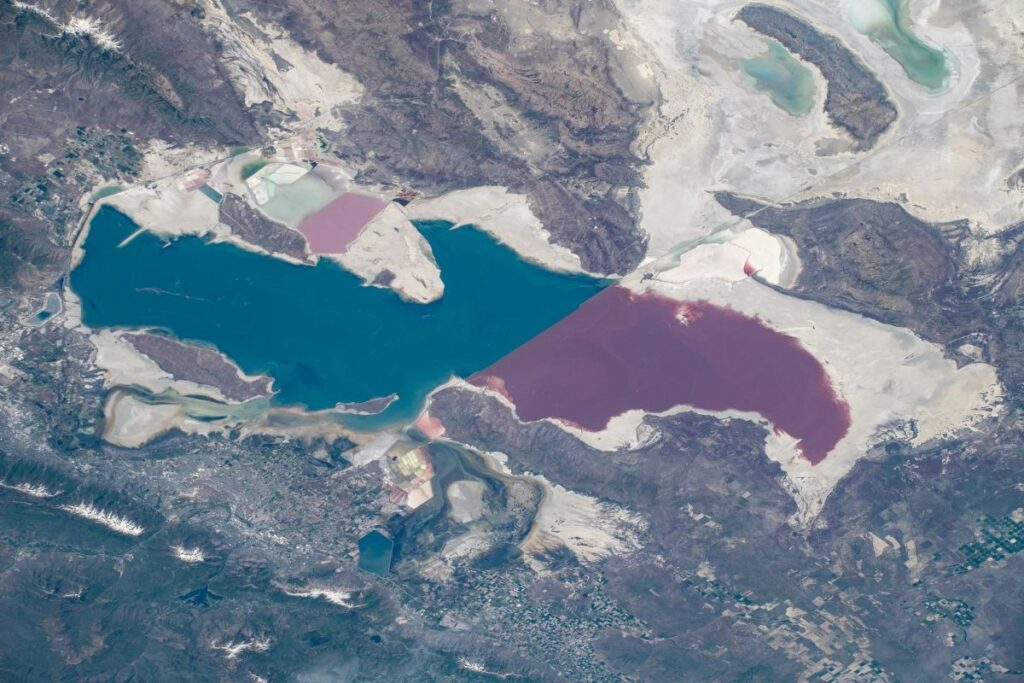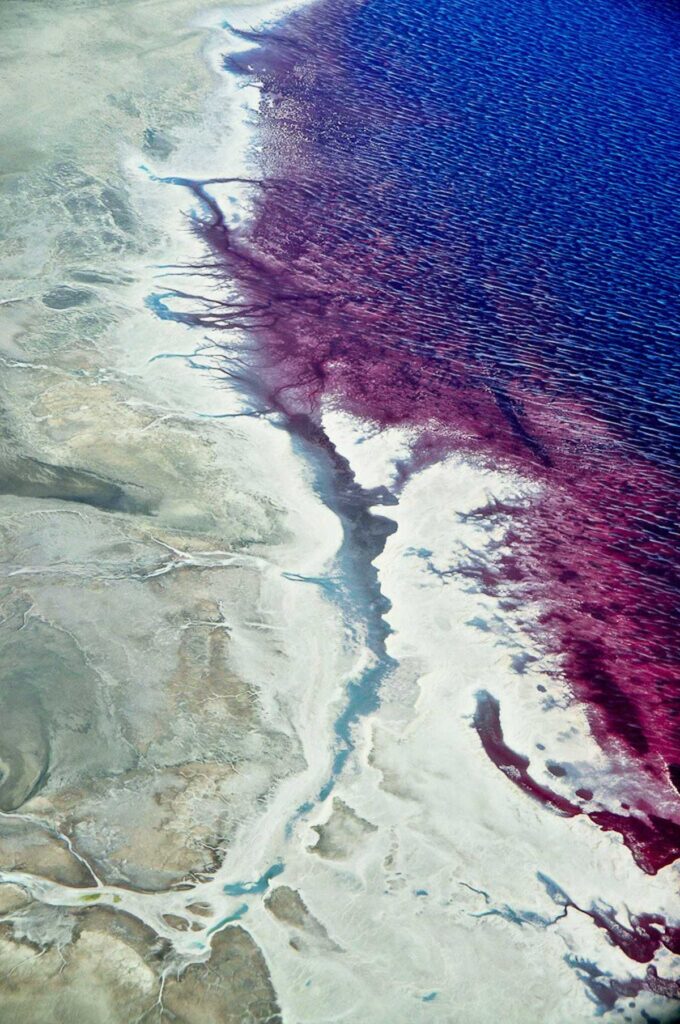
Estimates of how fast the vital Thwaites Glacier will melt have failed to take into account the tides.
The Great Salt Lake, an expansive marvel in Utah, harbors an intriguing secret. A massive railroad causeway cleaves through its heart, resulting in two distinct bodies of water with markedly different characteristics. On one side, a vivid blue entices visitors, while the other boasts a mysterious red tint.

The culprit responsible for this aquatic division is the Lucin Cutoff, a pioneering 102-mile railway shortcut constructed in the early 1900s. Before its inception, trains traversed the formidable Promontory Mountains, significantly prolonging travel times and distances. The shortcut, while revolutionary, came with its own set of consequences.
Originally crafted from wood, the causeway obstructed natural water circulation within the lake. By the 1950s, it was replaced with a sturdy rock-fill structure, further limiting water interchange and giving rise to the emergence of two distinct sections – north and south.

The southern arm, bathed in a brilliant blue hue, benefits from a continuous influx of freshwater from three major rivers: the Bear, Weber, and Jordan. This infusion dilutes the lake’s salinity, rendering it far less salty than typical seawater.
Conversely, the northern arm presents a stark contrast. Isolated from freshwater sources, it has evolved into a hyper-saline environment – nearly ten times saltier than the ocean! This extreme condition supports a unique ecosystem of salt-tolerant organisms such as brine shrimp, brine flies, nematodes, and various forms of algae. These microorganisms impart a striking red hue to the north arm, a dramatic counterpoint to its southern counterpart.

Meanwhile, the wetlands flanking the eastern and northern perimeters of the Great Salt Lake play a critical role as habitats for millions of migratory shorebirds and waterfowl across western North America. These wetlands constitute approximately 75% of Utah’s wetland areas.
Undoubtedly, the Lucin Cutoff revolutionized railway logistics, yet its ecological impact on the Great Salt Lake remains profound. Initiatives are underway to mitigate the causeway’s effects. In 2016, for instance, a breach was created beneath a newly constructed bridge to facilitate water flow, aiming to restore a more natural balance to this captivating, partitioned lake.

This endeavor assumes even greater significance as the Great Salt Lake has undergone significant shrinkage since 1987, attributed to drought, climate change, and excessive utilization of snowmelt. Its surface area has dwindled from approximately 3,300 square miles to a mere 950 square miles as of July 2022. Furthermore, the lake’s water level has experienced considerable fluctuations, reaching its lowest recorded point in December 2022. Without effective policy interventions, scientists caution that the lake could desiccate entirely by 2028, imperiling local ecosystems.

In conclusion, while the Lucin Cutoff has left an indelible mark on transport history, its enduring legacy on the Great Salt Lake underscores the delicate balance between human innovation and environmental stewardship. Efforts to safeguard this natural wonder are crucial for preserving its biodiversity and ensuring its sustainability for generations to come.

Leave a Reply